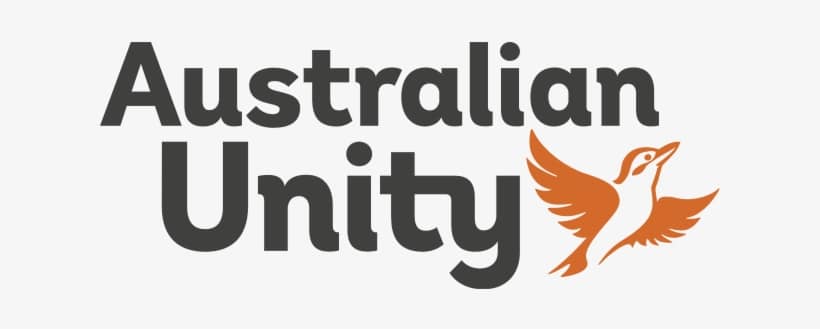Home > Health Insurance > Optical Health Insurance
Optical Health Insurance
Compare your options for optical health insurance through Savvy and get free quotes today.
Author
Savvy Editorial TeamFact checked



We’ve partnered with Compare Club to bring you a range of health insurance policies to help you compare them side by side.
The cost of new glasses and contact lenses can add up to thousands of dollars over a lifetime, which is why many Australians choose to have private health insurance which covers optical expenses. However, the amount you can claim back on your optical allowance varies dramatically between health insurance policies, which is why it’s important to consider your options to help you find the best cover for your personal situation.
You can compare a range of health insurance policies which provide optical cover through Savvy. Consider instant online quotes from a panel of trusted Australian providers to help make your choice of health insurance policy simpler. Get the optical health cover comparison process started through us today.
What is optical health insurance and what does it cover?
Health insurance including optical cover will help with the cost of buying glasses and contact lenses to aid your vision. It's provided by extras health cover, a form of health insurance that can cover out-of-hospital treatments and services which generally aren’t covered by Medicare.
The optical cover included in your extras insurance will usually cover some, or all, of the following costs:
- the cost of prescription lenses for glasses
- the cost of certain frames for glasses
- the cost of prescription contact lenses
The amount you can claim back on the cost of your optical treatment will depend on the extras cover you buy. The higher the level you choose to have, the fewer out-of-pocket expenses you’ll likely have to pay. In some cases, some of the best health insurance policies for optical cover will provide you with up to 100% of the cost of getting prescription glasses or contact lenses. However, with cheaper policies, you may only be able to claim back 50% to 60% of your costs.
What isn’t covered by optical cover on an extras policy?
Some of the things which won’t be routinely covered by your extras health cover for optical services include:
- eye tests, which are covered by Medicare
- laser eye surgery
- non-prescription sunglasses
- cases, straps or bags for your glasses or lenses
- the cost of optical products associated with contact lenses, such as rewetting drops, cleaning fluids, rinsing fluids and cleansers
How do I compare health insurance policies with optical cover?
Unlike hospital cover policies, the cover provided with an extras health policy isn’t mandated by Australian Government private health insurance legislation. This means the benefits offered by different extras policies varies from provider to provider. Some of the aspects to consider when comparing quotes for health insurance with optical cover include:
- Inclusion and exclusions – make sure you understand exactly what cover you’re buying and what the inclusions and exclusions are. Some of the best policies will offer you no-cost optical services at selected private practices affiliated with the health fund.
- Benefit cover – look at what the policy offers to cover in terms of benefit limits. Some policies have a dollar amount you can spend on each category of treatment, while others will pay a percentage of the cost, such as 60% to 85% of the cost of treatment. Some have both.
- Category limits – many extras policies have limits for the amount you can claim back in each category of treatment. For example, you may have $300 to spend on optical, $500 to spend on major dental and $250 to spend on physio treatment in one calendar year. The higher these limits are, the more the extras policy may cost.
- Annual benefit limits – some policies provide an annual benefit limit, which is the total amount that can be paid out on that policy per year. Comparing these benefit limits will help you decide the level of cover which is suitable for you
- Cost – it’s natural to want the cheapest health insurance policy possible, but the cheapest policy may not always offer you the cover you’re after, which is why it pays to compare policies carefully through Savvy
- Waiting periods – most insurance companies impose waiting periods between when you buy your policy and when you’re able to make your first claim. For optical cover, these waiting periods usually range from two to six months, but it’s important to compare between insurers before signing on the dotted line.
- Policy reset date – it's well worth comparing what the reset date is for the health provider you’re considering, as this may influence your choice between funds if you’re thinking of switching. Some health funds reset their payment clock on January 1, and some on July 1.
How much will it cost to get health insurance which offers optical cover?
The cost of your optical cover will depend on the level of cover you wish to buy, ranging from a low-cost option which will offer the lowest benefits to the most comprehensive extras cover. All the examples below are based on a single person earning under $90,000 per year and living in NSW, with prices per month accurate as of March 2023:
Lowest-cost extras cover
As an example of price, all the following health funds offer a basic extras policy which includes optical, general dental, physiotherapy and chiropractic services. They include cover for optical benefits ranging from $100 to $160 a year.
- HCF Starter Extras (with Optical) – $16.96 per month
- HBF Basic Extras – $17.60
- BUPA Starter Extras – $23.33
Medium-priced extras policies
In addition to optical cover, these medium-priced policies may also include general and major dental, physiotherapy, chiropractic, and in some cases acupuncture and ambulance cover too. Two of the policies have an optical limit of $200, and the other a limit of $150.
- HCF Mid Extras – $32.68
- HBF Flex 50 – $31.51
- BUPA Freedom 60 – $32.27
Top extras cover
These policies offer the highest-level extras cover with maximum benefits across a wide range of services and treatments. Optical cover limits for these policies range from $275 to $300 per year.
- HCF Top Extras – $79.54
- HBF Top 70 – $92.77
- BUPA Top Extras – $95.26
Types of health insurance
This can help you pay for medical treatment if you need to be admitted to hospital. It can help cover the cost of your admission or accommodation and the fees charged by doctors, surgeons and anaesthetists. It can also cover other costs associated with a stay in a private hospital.
This helps cover the costs of health care treatments outside a hospital setting which aren’t covered by Medicare. This can include major and minor dental treatment, orthodontics, hearing aids, physiotherapy, glasses, contact lenses and podiatry (in most cases with annual limits).
This is a standard health insurance policy designed for a single person, rather than being tailored to cater to the needs of a couple or family. It may include hospital cover plus extras, or either of these types of insurance on their own, depending on what you're after for your health cover.
A family health insurance policy is designed for a family unit including dependent children who may reach up to 31 years of age with some insurers. It offers private health insurance suitable for the whole family and may include shared limits for all members included in your policy.
A health insurance policy aimed at seniors is designed to appeal to people who are in the second half of their life. These are often specific Silver Plus policies that offer the same cover as other health insurance policies, with the exception that pregnancy and childbirth cover may not be included.
Visitors who are in Australia on a temporary basis for travel, work or study may be able to take out Overseas Visitors Health Cover (OVHC). Many visas issued in Australia come with a requirement to take out this type of insurance, which covers visitors who may not be covered by Medicare.
Ambulance cover is generally available either packaged into your private health insurance or on its own as a separate policy or subscription. By having this protection, you could be covered for all eligible ambulance travel in Australia (subject to your insurer's terms and conditions).
The cheapest and most barebones form of private hospital insurance, this can include cover for rehab, in-hospital psychiatric services and palliative care. Having this policy will enable you to avoid paying the Medicare Levy Surcharge (MLS) and Lifetime Health Cover (LHC) loading.
Bronze hospital cover is a step up from basic insurance, including 18 further clinical categories such as ear, nose and throat, bone, joint and muscle, digestive system, joint reconstructions, gynaecology and chemotherapy, radiotherapy and immunotherapy for cancer.
Silver hospital cover is the second-most expensive type of policy and offers the second-most clinical categories. On top of what's offered by basic and bronze cover, it also includes heart and vascular system, lung and chest, blood, hearing device implantation and dental surgery.
The highest level of private hospital insurance available in Australia, gold policies can offer cover for pregnancy and birth, weight loss surgery, assisted reproductive services and insulin pumps on top of all the categories provided by silver, bronze and basic hospital insurance.
Why compare health insurance through Savvy?
100% free service
Our comparison tool doesn’t cost you a cent, allowing anyone to compare offers from trusted insurers around Australia for free.
Compare policies online in one place
You can consider the inclusions, premiums, benefits and other key factors easily with us, whether you’re at home or on the go.
Trusted insurers
Considering offers from trusted insurance providers can help give you peace of mind that you’re comparing high-quality policies.
Frequently asked questions about optical health insurance
Some health insurance policies in Australia do offer cover for laser eye surgery, but cover for this type of treatment is usually only offered in the top level of extras cover.
This will depend on which health fund you choose to buy your policy with. Some providers have an agreement with online suppliers which may allow you to purchase your glasses online, while others don’t. You’ll need to contact your insurer to ask about their online purchase policy for glasses and contact lenses.
Those under 65 years old are entitled to a bulk billed eye test paid for under Medicare once every three years. For older Australians aged over 65 years, Medicare will pay for one bulk billed eye test every year. However, if you have a diagnosed eye disease, you may be eligible for additional bulk billed eye tests each year paid for by Medicare. Check Medicare’s eligibility criteria if you’re unsure what you may qualify for.
Family extras policies which include optical cover usually come with both an overall policy limit and a per-person limit. For example, one medium-priced family extras policy has an optical limit of $550 per year, with a $225 per-person limit. In theory, this means that two family members could each spend $225 a year on a pair of glasses, while the rest could spend up to a combined $100.
Helpful health insurance guides
Looking for health insurance to cover your condition or treatment?
Read one of our helpful guides on a range of different ailments and potential hospital or extras treatments to help you find out if they're covered.
Disclaimer:
Savvy is partnered with Compare Club Australia Pty Ltd (AFS representative number 001279036) of Alternative Media Pty Ltd (AFS License number 486326) to provide readers with a variety of health insurance policies to compare. Savvy earns a commission from Compare Club each time a customer buys a health insurance policy via our website. We don’t arrange for products to be purchased from these brands directly, as all purchases are conducted via Compare Club.
Savvy’s comparison service is provided by Compare Club. Compare Club compares selected products from a panel of trusted insurers and does not compare all products in the market.
Any advice presented above or on other pages is general in nature and doesn’t consider your personal or business objectives, needs or finances. It’s always important to consider whether advice is suitable for you before purchasing an insurance policy.
For any further information on the variety of insurers compared by Compare Club or how their business works, you can read their Financial Services Guide.










